Coming to terms with the aftermath of a car accident can be daunting. In moments of uncertainty, understanding when to file a car accident lawsuit is crucial. With alarming regularity, victims resort to settlements out of court. Settlements are often expedient, but they may not adequately address the costs associated with physical rehabilitation, medical expenses, and loss of income.
There are several reasons for which embarking on a car accident lawsuit may be necessary. These include a dispute over who's at fault in the accident, dissatisfaction with the insurance company's offer, or a standstill in negotiations. This does not negate the complexities associated with lawsuits, but it underscores why a judicial intervention might sometimes prove instrumental.
Initiating a car accident lawsuit is a process best guided by seasoned lawyers. The initiate often starts with contacting an attorney, who will review the strength of the claim and predict the case's likelihood of success. This step will be followed by drafting and filing the lawsuit, followed by the discovery phase, deposition, mediation, trial, and settlement or judgment. This article uncovers some of the key aspects every accident victim should understand about car accident lawsuits.
The phrase "statute of limitations" might seem distasteful to many, but in the world of law, it signifies a vital component. A statute of limitations, in legal terms, is a timeframe within which a person can press legal charges against an alleged culprit. It is instrumental in placing checks on the time within which a lawsuit must be initiated. The length of this timeframe varies by state and the nature of the lawsuit.
However, each state in the United States bears its statute of limitations. For instance, states such as California, Kentucky, and Minnesota grant two years for personal injury cases, while others, including New York and Florida, give victims up to four years. Understanding this timeframe is crucial because missing the deadline could lead to a dismissal of the case, leaving victims without any legal recourses.
While different states have different timeframes, it's important to note that the clock often begins ticking on the day the accident occurs. An exception is the discovery rule that may apply in cases where an injury was not immediately noticeable. It is ideal to consult an attorney right away to ensure compliance with the state's statute of limitations and preserve the right to sue for damages.
Delving into a lawsuit might seem like a deep dive into an abyss, but with the right knowledge of what to expect, the process becomes less intimidating. Lawsuits generally traverse several key stages, each required to establish the case, build evidence, and reach a fair judgement or settlement.
Legal battles commence with the discovery phase, a part preceding the actual trial where both parties investigate the case's facts. It is during discovery that the parties can obtain witness testimonies, depose parties, and gather critical evidence to use during the trial. Discovery is paramount if a lawsuit is to be successful - it offers insight into the nature of the case, the standings of both parties, and unearths any hidden evidence.
This stage is followed by pre-trial motions, settlement discussions, trial, and sometimes an appeal. Each stage has specific procedures and can significantly impact the outcome of the case. For example, during pre-trial motions, your lawyer could move to exclude certain pieces of evidence that might prejudice the jury against you. Alternatively, during settlement discussions, your attorney might negotiate a compensation amount that adequately covers your damages without a trial. In the realm of car accident lawsuits, patience, coupled with meticulous case management, paves the way for the desired outcomes.
So, what exactly does filing a car accident lawsuit entail? It represents the first step of formally seeking legal reparation for damages suffered in an accident. With a filed lawsuit, an individual legally asserts their grievances due to someone else's negligence. However, filing a lawsuit is a process that demands careful attention and precision.
The initial step involves drafting the complaint, which is a legal document outlining your allegations against the defendant. It details claims about the driver at fault, the damages suffered, and the desired compensation. Each claim must be stated individually, and every contention must be backed with factual underpinnings provided in a clear, concise manner.
The complaint is then served to the defendant, officially notifying them of the impending legal action. Ensuring the defendant is appropriately served is vital as it directly impacts the lawsuit's validity. If the defendant is not properly served, they may be able to argue the case should be dismissed. Remember, filing a lawsuit is no small task and must be undertaken with serious consideration and preparation. To this end, utilizing competent legal advice is crucial.
In the array of documents critical to a car accident lawsuit, the spotlight often falls on police reports. These reports lend credence to the case as they provide objectivity, coming from a neutral law enforcement official. A detailed police report is a spine to a robust car accident lawsuit.
A police report holds a plethora of pertinent facts. It names the drivers involved in the accident, the date, place, and time of the accident, the sequence of events leading up to the accident, and information about any witnesses. It also includes the law enforcement officer's opinion on who violated the law, whether the violation directly resulted in the accident and whether any citations were issued.
This commentary, coupled with specific accident details, provide a holistic view of the accident and often set the tone during negotiations or a trial. Understanding the importance and contents of a police report can significantly enhance your case's chances of receiving fair compensation for damages incurred. For further guidance on this document, consider exploring how to interpret accident reports.
One unpredictable aspect of car accident lawsuits is the jury verdict. A diverse group of individuals with distinct thoughts and sentiments, a jury holds the balance in determining the case's fate. In personal injury cases resulting from car accidents, jury verdicts can highly sway the compensation awarded.
The jury evaluates the evidence, listens to witness testimonies, and decides on the facts of the case. Based on their findings, they determine if the defendant should be held liable for the plaintiff's injuries. Subsequently, they decide on the amount of compensation necessary to cover the plaintiff's damages, which may include medical bills, lost wages, and pain and suffering.
Jury verdicts and awards are typically unpredictable because they rely heavily on the jury's personal feelings, beliefs, and attitudes. Some jurors might be more sympathetic to accident victims, while others may lean toward believing that people often exaggerate their injuries. Being well-prepared and presenting a convincing case is critical in achieving a favorable jury verdict.
Depositions, although not a regular feature in every dinner table conversation, play a vital role in car accident lawsuits. A deposition is a process within the discovery stage where witnesses, including the plaintiff and defendant, give testimonies under oath. This process can be instrumental in building a robust case and seeking the truth about the accident.
The relevance of depositions in a car accident lawsuit is multifaceted. They allow opposing attorneys to gain a thorough understanding of what transpired, right from the involved parties. More so, they provide an opportunity to assess the credibility of the witnesses, their recollection of events, and how well they might present before a jury. The sworn testimonies given during depositions can be used against a witness if they give contrasting evidence at trial.
Achieving a successful deposition is based on understanding the do's and don'ts. This might include providing clear and truthful answers, only responding to what is asked, and avoiding guessing or speculations. Armed with the right knowledge, depositions can be navigated successfully, ultimately strengthening your car accident lawsuit.
After a car accident, the road to a lawsuit is often riddled with interrogations and questioning. Interrogatories, a series of written questions sent to the opposing party, represent a vital tool for gathering facts and evidence during the discovery stage of a car accident lawsuit.
Interrogatories allow attorneys to delve into the details of the case, the defendant's version of events, and collate information that would prove crucial later in the lawsuit. What's the defendant's account of the accident? Are there any potential witnesses? Have there been prior accidents or insurance claims? These are some of the questions often posed to extract precise and useful responses to these inquisitions.
The significance of written questions in a lawsuit cannot be overstated. If appropriately used, they provide an insight into the opposition's plans, therefore, allowing ample preparation for any rebuttals.
Patience is a virtue, a philosophy that resonates well with the car accident settlement and lawsuit timeline. The duration of a car accident case depends on various factors like the complexity of the accident, the severity of injuries, and the timeliness of filing a lawsuit.
The timeframe varies depending on whether the case is settled out of court or proceeds to trial. A settlement can be reached quickly with cooperation from all parties involved. However, if an agreement is not reached, the case might have to go to trial, which could potentially extend the timeline by several months, sometimes years.
Despite the potential lengthiness, some strategies can aid in reaching a settlement faster or pursuing a lawsuit more efficiently. These include promptly starting the case, actively engaging in the discovery phase, and being ready for trial. Notwithstanding, the primary aim should be to ensure a fair resolution of the case, not just a quick one. If you've been injured in a car accident in Massachusetts or New Hampshire, contact Kiley Law Group today.

